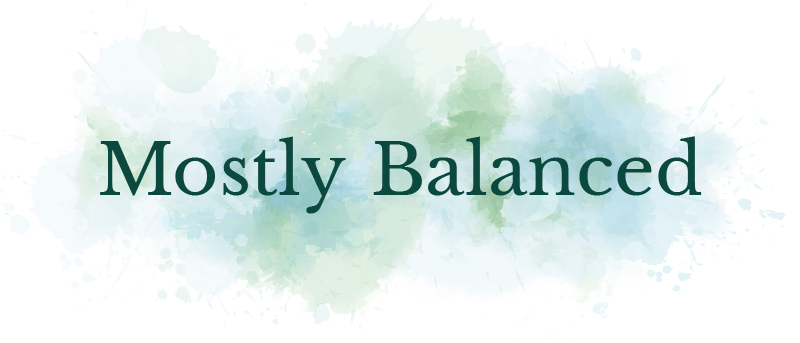
Welcome to October. While we’ve still had warm days this week, it’s starting to feel more and more like fall around here. I think we’ve been to the splash park for the last time of this year’s summer season. I’m beginning to plan Charlotte’s Halloween costume and trying to help her remember what trick-or-treating is (she gets the general concept, I think, and definitely knows there’s candy involved). It’s also getting darker earlier, which last weekend really threw Charlotte off when she woke up from her nap, asked for a smoothie (something she eats for breakfast and snacks, so not an unusual request) and then freaked out a bit when she saw how dark it was outside. We think she thought it was the morning and got really surprised that it was the end of the day rather than the start of a new one.
Here’s what I’m eating and reading this week:
Weekly Menu Plan (in case you need ideas or inspiration):
Sunday: Sweet potato & red lentil curry (made in the slow cooker) + roasted broccoli — this made so much, we had leftovers for days. Great flavor but texture seemed a bit one-note.
Monday: Leftovers (as always on Mondays)
Tuesday: Simple fish tacos from Food52: A New Way to Dinner cookbook
Wednesday: Creamy zucchini and sausage pasta from Back Pocket Pasta cookbook
Thursday: Leftovers
Friday: Pizza night
Saturday: Breakfast for dinner: waffles and smoothies (this was both quick & easy and satisfied my late-pregnancy sweet tooth)
Here’s what I’m reading and loving this week:
In the book world, there have been two interesting themes bubbling up in a lot of my feeds over the past several weeks.
First, there’s been some talk about the opaqueness of the New York Times‘ bestseller list and the extent to which it can be manipulated (with one book recently making its way onto the YA list for 23 hours before being retracted). Here’s a follow-up article on past attempts.
It was also banned books week, and this article on 2016’s most frequently banned titles (and what is says about us as a culture) was a good read.
A repost of a good blog on dieting, Whole30, and when “healthy eating” is really dieting. Also this podcast, episode #45.
On assholes and not giving a shit (yes, Trump comes up).
One of many articles on women and emotional labor – this one seems to be resonating.
Book Review
 Title: No Apparent Distress: A Doctor’s Coming-of-Age on the Front Lines of American Medicine
Title: No Apparent Distress: A Doctor’s Coming-of-Age on the Front Lines of American Medicine
By: Rachel Pearson
Date: May 2017
Format: book
Fiction dominates my reading list, but this non-fiction book read like a breeze and felt incredibly timely given its focus on the winners and losers in the health care system, and the author’s first-person experience in struggling communities (in her case, Galveston, TX) in the aftermath of devastating hurricanes.
Her main points were accessible, and it feels like she’s shining a light on persistent, embedded problems through describing her own experiences and encounters, rather than preaching and proposing tidy answers for complex problems. There’s a lot that remains unresolved in her book, which means there’s a lot for us as a culture (and me, more specifically in a community of healthcare providers) to keep working on. It was insightful to read as a Massachusetts healthcare provider, too, because our insurance system serves as a bit of a buffer and safety net in some ways, but health disparities across socioeconomic and racial lines still persist.
A few of my favorite quotes:
“Many physicians exhibit ‘aversive racism,’… we value equality and condemn the notion that we might be racist, but we still act on subtle, unacknowledged bias. Patients pick up on aversive racism through cues, such as shifty eye movements or the physician leaving the room quickly” (pg 131). Pearson then mentions the Implicit Association Test (IAT), a test that’s available online to assess for subtle preferences in race in our interactions.
“… it was OK medicine: we caught some things, treated some things, did some screening tests. But it was not the best medicine, and I felt these people, who were so poor, really needed the best. What if the presence of the monthly free clinic kept them from going [to other cities and hospitals] where they could get better care? … Some people think free clinics are altogether a bad idea, that we are a stop-gap measure designed to help medical professionals feel better about injustice in medicine” (pg 151).
“Doctors tend to rush out of encounters when we feel uncomfortable. Instead, we should slow down and ask more questions, work to build a relationship” (pg 197).
“This is how medical training works: you count on your mentors to show you the way, and you learn as you go. You make mistakes as a student — more than residents make, and far more than fully qualified doctors make. Most of the time, your mistakes get caught by your superiors before you can do any real harm. But sometimes they don’t get caught. The problem, of course, is that these mistakes happen systematically, and not just to anyone. They happen to the uninsured and to people on Medicaid or county indigent programs. They happen to free-clinic patients, prisoners, and undocumented people. They happen to working-class whites and people of color. If you are a patient at a private clinic, then you can be pretty sure that most of your doctor’s mistakes have already been made. They were made on the bodies of the poor.”





